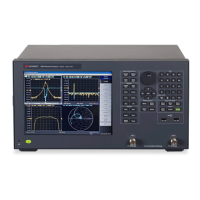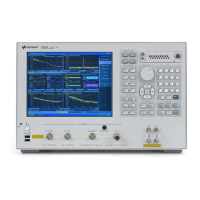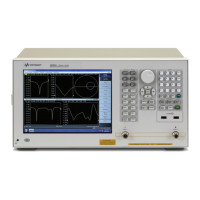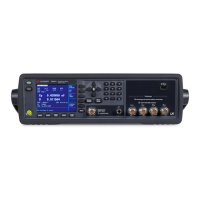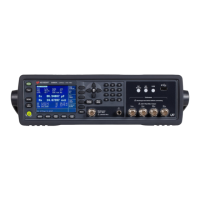5 Mode Functions
Mode
If you are using the Help feature, this mode must be currently active to access its detailed information. If it
is not active, exit the Help feature (Esc key), select the mode, and re-access Help.
Key Path
Mode
Example INST:SEL LTE
INST:NSEL 102
Initial S/W Revision Prior to A.02.00
LTE TDD
Selects theLTE TDD mode for general purpose measurements of signals following the LTE TDD standard.
There are several measurements available in this mode.
If you are using the Help feature, this mode must be currently active to access its detailed information. If it
is not active, exit the Help feature (Esc key), select the mode, and re-access Help.
Key Path
Mode
Example INST:SEL LTETDD
INST:NSEL 105
Initial S/W Revision A.03.00
LTE-Advanced FDD
As LTE-Advanced FDD and LTE modes are converged into one single application, the single softkey under
Mode menu is designed to select the coverged mode. The display mode of the LTE and LTE-Advanced
FDD are distinguished by the licenses.
If you are using the Help feature, this mode must be currently active to access its detailed information. If it
is not active, exit the Help feature (Esc key), select the mode, and re-access Help.
Key Path
Mode
Example INST:SEL LTEAFDD
INST:NSEL 107
Notes When the N9080A/80B–1FP exists, the display mode name is LTE.
When the N9080A/80B–1FP and N9080B–2FP all exist, the display mode name is LTE FDD & LTE-A
FDD.
Backwards
Compatibility SCPI
INST:SEL LTE
INST:NSEL 102
Initial S/W Revision A.14.00
Modified at S/W Revision A.14.50
EMI Receiver Mode Reference 239

